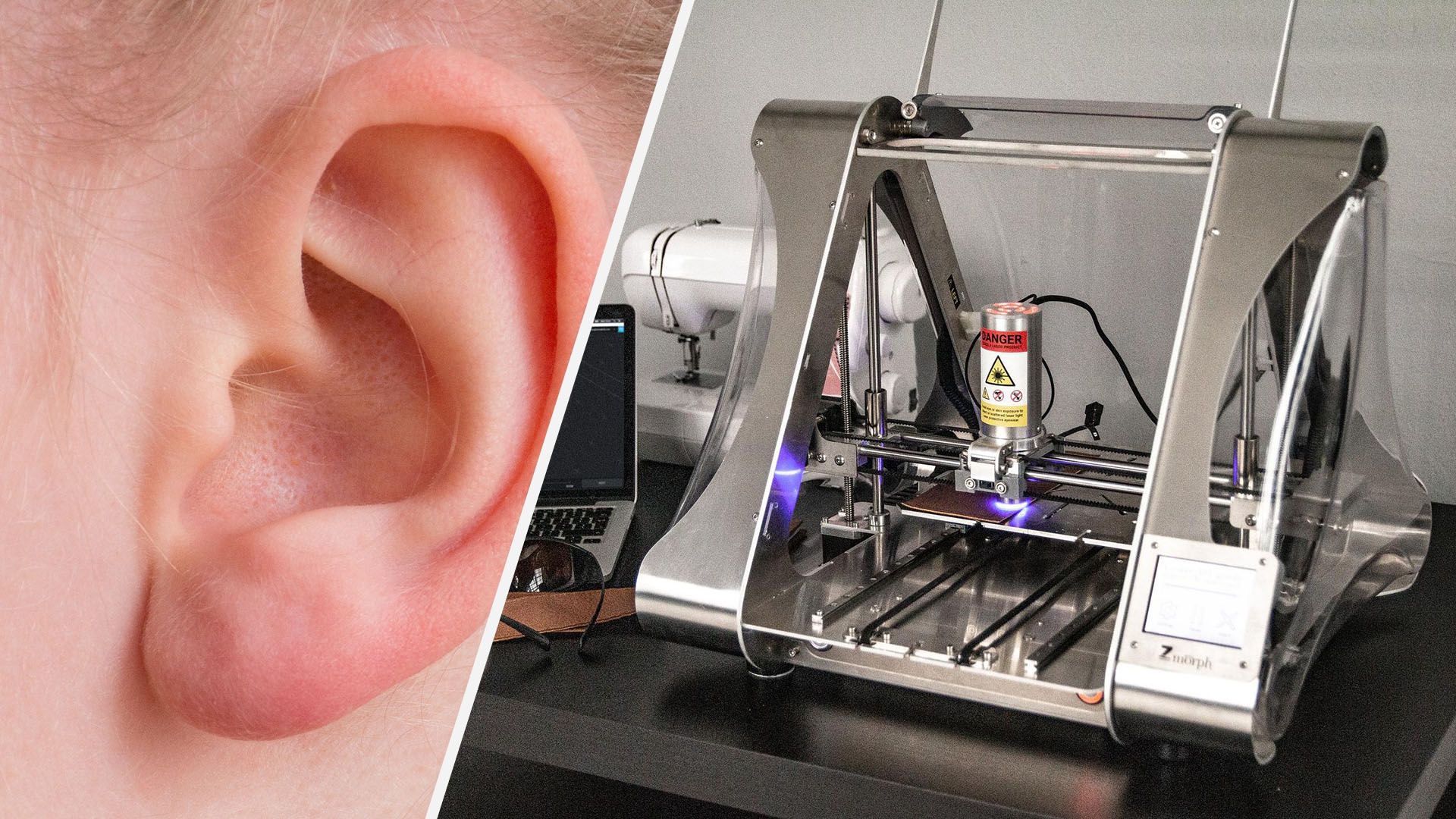Printed ears could help many people worldwide.
In a clinical study, doctors have succeeded in implanting a 3D-printed ear in a woman, which was created from her own body cells. The technology is called 3D bioprinting and largely describes the printing of tissue and organs for research.
However, the fact that body parts printed in this way are actually successfully implanted is new. The team from 3DBio Therapeutics from the USA succeeded, like from a press release of the company. The technology is intended to replace older, invasive methods and thus help thousands of people.
Solar cells from a printer
E-car drives 15,000 kilometers with electricity from printed plastic
A ray of hope for microtia patients
First and foremost, 3D printing from your own cartilage cells is intended to help microtia patients. In the disease, one or both of the outer ears are underdeveloped or simply absent. Around 1,500 babies a year are affected by the disease in the USA alone, and the new technology could help them.
So far, either implants made of costal cartilage or synthetic material have been used for treatment. The problem here is that costal cartilage removal is a very invasive procedure and synthetic material tends to be rejected by the body. For the new method, the researchers use a biopsy of the existing ear and cartilage cells.
This procedure is far less invasive and the printed ear is made from your own cells. So there is a greater likelihood that the body will accept it.
We are looking for reinforcements in the tech area! If you would also like to write cool tech stories and articles on GameStar, including about smartphones, apps, gadgets and the like, then take a look at our job advertisement.
The technology is still in its infancy
However, a successful implantation does not mean that the technology is ready for the mass market. For the time being, the researchers will continue the clinical study and refine the process. However, you can well imagine that the technology will have far-reaching consequences. Daniel Cohen, CEO of 3DBio, says:
This is a truly historic moment for patients with microtia, and more broadly for the field of regenerative medicine, as we begin to demonstrate the real-world application of next-generation tissue engineering technology.
The technology could therefore also be used in other areas. Exactly where that will be remains to be seen. This Mitsubishi space factory also uses a 3D printer to produce satellites in space:
2:23
3D printer as a mini factory: This is how Mitsubishi wants to produce antennas in space
You can read all the details in this article:
Mini factory in space: Mitsubishi soon wants to let the sun work for them
Medicine and technology often go hand in hand. Do you think 3D printed implants have a future? Could the technology help with other diseases in the future? Your opinion is in demand.











